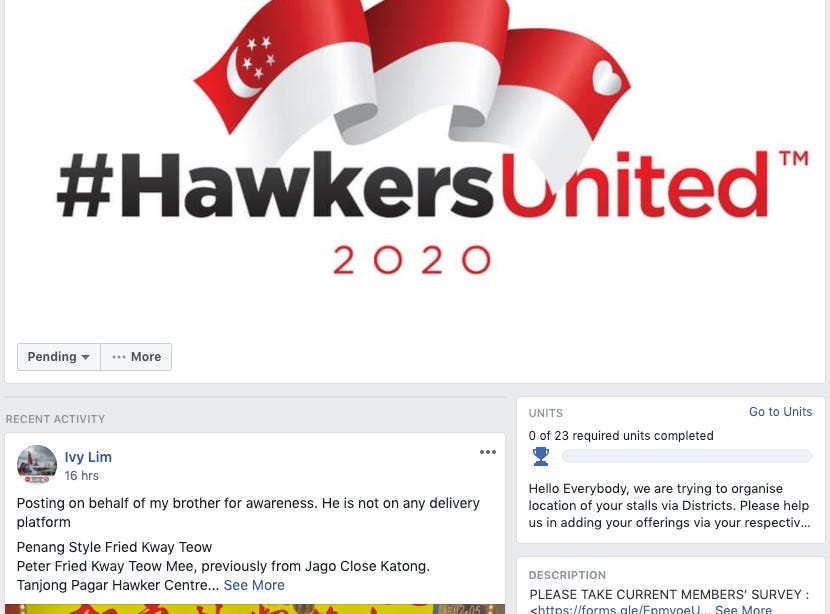
A warm welcome to the Deeper newsletter, dear reader!
You’re reading this because, just like us, you’re tired of the non-stop tech and startup news cycle, where there seems to be something new and trendy to keep up with in Southeast Asia.
What you want to know about is the important stuff that matters—period.
And that’s what we’re bringing to you. We’ll dive deep into a trending topic in Southeast Asian tech, and their impact on society (i.e. me and you).
Sound compelling? Subscribe now, and we’ll send it straight to your inbox:
Without further ado, let’s dive in.

Though COVID-19 first appeared in December 2019, we only began to see the pandemic’s global impact in March 2020. Few organizations—not families, not governments, not businesses—were prepared for its meteoric rise from a little-known cousin of the flu to a destabilizing pandemic.
For many of us, this is a highly unpleasant pop quiz on business continuity, contingency planning, and on-the-spot innovation.
Some companies have struggled to deal with COVID-19. The pandemic has forced our hand and necessitated the as-fast-as-possible adoption of digital anything and everything.
From a certain perspective, COVID-19 is a suspiciously-well-timed trigger for even faster digitalization. We can’t afford to be slow about digitalization anymore, not when our productivity and sanity depends on it.
So what has changed, and which businesses are coming out on top? Which trends are we expecting to become mainstream as a result of all this? Let’s jump right in.
TL;DR: Many agree that no matter what happens in the short term, COVID-19 is going to permanently lead us further into the virtual and digital world. Companies hoping to survive will need to acknowledge that digitalization is a necessity:
- Remote work/distributed workforce is no longer a passing trend
- Streaming services shine a light during dark days
- Telehealth helps you stay out of awkward waiting rooms
- Memes are back (were they ever gone?)
- (Almost) everything can be delivered
- Entertainment and lifestyle companies are seeing major opportunities
One day in the (hopefully soon) future, we’ll wake up to a calmer world, look out the window, and know that our world has changed forever.
Remote work/distributed workforce is no longer a passing trend
Gone are the days of yore, when remote employees, telecommunications, and flexible working arrangements were side-eyed with doubt and suspicion. Thanks to widespread, inter-city lockdowns, companies have to adopt #WorkFromHome processes if they want to keep operating at all.
And some—like Singaporean Minister for Trade and Industry Chan Chun Sing—expect working from home to continue to be the norm even as quarantine measures are eased.
One of the biggest winners here is definitely Zoom. Despite Zoombombing (where random people show up in hordes to disrupt your call) and some unsettling hacks and leaks, Zoom shares climbed 6.2% in February, putting the videoconferencing company on pace for an 11.6% weekly gain and a 67% return for the YTD.
(Unfortunately, some less-than-savvy investors mistakenly bought the wrong stock—of another company confusingly named “Zoom Technology”.)
Zoom’s success has inspired Google to take their own video tool a bit more seriously. From the beginning of May, some users have seen a small notification for Google Meet (once called Hangouts) in the left sidebar. Video calls can now be launched directly through Gmail. Formerly available to enterprise and education customers only, the software is now available to anybody with a Gmail account. You can host meetings of up to 100 participants with no time limit.
For K-12 and college education providers, the software of choice has varied slightly depending on where you are in the world. In Indonesia, Cisco Webex has been made completely free for the duration of the pandemic—and the company has also partnered with the Education and Culture Ministry to support the government’s distance learning programs.
Zoom use grew globally from 10 million daily participants in December to over 200 million, reported Zoom founder and CEO Eric S. Yuan, and it is currently still at the top of the USA Apple Charts.
It remains to be seen whether universities will begin to make MOOCs and online classes more readily available, or if this is a temporary measure to keep things hobbling along.
Secondary effect: COVID-19 has highlighted the need for better Internet
Remote working is all good and well in areas where quick Internet is affordable and readily available. But not all students or employees have this luxury:
Perjuangan mahasiswa/i untuk kuliah online. Mencari signal saja sebuah perjuangan. Mereka harus ke area perbukitan atau titik tertentu untuk mendapatkan signal agar bisa online.
📸: makassar_iinfo | IG pic.twitter.com/Jrwdf6u09z
— Forza Bintang Wirayasa (@bintangforza) May 6, 2020
Translation: [Indonesian] college students’ struggle to complete online university. Seeking a decent signal is a major struggle. Many must go to hilly areas or certain spots in order to get a signal so they can attend online class.
Expect to see pressure on telco providers to build better infrastructure and provide better services. Many are beginning to agree that Internet access is no longer a luxury, but a basic right in this age.
Streaming services shine a light during dark days
Many people have seen in COVID-19 a rare chance to binge the latest hit TV shows. Steamy Korean melodrama “World of the Married” has engulfed Twitter in fiery discourse since February; on May 2, “it reached an average viewership rating of 24.33% nationwide—officially the highest ever achieved by any show in Korean cable network history.
Netflix has seen a whopping 15.77 million new paid subscribers globally in the past three months, over twice their earlier forecast for Q1. The streaming giant has acknowledged that the increase is likely temporary, but regardless—paying customers during a pandemic are something to be grateful about.
Netflix’s success during this time has us looking regretfully back at regional competitor HOOQ’s failure earlier this year. The five-year-old company crashed in March despite total fundraising of nearly US $100 million. If they’d had enough funds to pull through just one more month, might they have made it?
Telehealth helps you stay out of awkward waiting rooms
The World Economic Forum reports that telehealth shows incredible promise in dealing with COVID-19 and, perhaps more importantly, reducing healthcare system strain post-pandemic. The changes being implemented are fast.
“Some have characterized recent developments as collapsing 10 years of healthcare innovation into two months,” writes the Forum.
Teleconsulting (where you chat or video call with doctors instead of meeting them at the clinic) is one of the fastest-growing healthcare sectors—you’ve got virtual clinic sessions in the US and Germany; in China you’ve got Ping-An Good Doctor; in Indonesia, AloDokter, and Halodoc are vying for market share.
You’ve also got WhiteCoat in Singapore. The startup was the first participant in the Singapore Ministry of Health’s regulatory telehealth sandbox, and CEO and founder Bryan Koh says it now has more than two million corporate and retail users in Singapore. SCMP reports that since January, the company has seen a growth of 20-30% week-on-week in consultations.
Telehealth isn’t just about teleconsultations, though. Studies in the US prior to COVID-19 showed that telemonitoring reduced death rate by 26% and length of stay in the ICU by 30%. Other interesting use cases are closely linked to 5G concepts:
- AI chatbots to screen for diseases
- predictive analytics to stratify the risk of a population
- Continuous remote monitoring in ICUs
- Instant delivery of alerts, reminders and educational materials to patients
Long live the memes
Want to be one of the cool kids, or get insider insights into the deeply unsettling world of millennials/Gen Z’ers? Join Twitter. Gen Z’ers and millennials from age 13 to 34 make up 63% of all Twitter users—no surprise, considering features like threaded discussions and quoted retweets make it a much better forum for communities (as opposed to Instagram or boomer-dominated Facebook).
Whereas Instagram has tended towards the glitz and glamour (either real or manufactured), Twitter has morphed from a simple engagement tool to a powerful aggregator of relevant, timely information. The social media platform has reported a record 24% increase in daily users, from 134 million at the start of 2019 to 166 million by the end of Q1.
In Q1, operating loss was $7 million for an operating margin of -1% of total revenue, vs. operating income of $94 million and operating margin of 12% in Q1’19. We incurred a net loss of $8 million, with net margin of -1% and diluted EPS of ($0.01). $TWTR
— Twitter Investor Relations (@TwitterIR) April 30, 2020
Unfortunately, unlike Netflix, Twitter is mostly free, with much of its revenue coming from advertising. The increase in users didn’t translate to an increase in revenue—rather, it saw a US$7 million loss during this quarter because many advertisers slashed their marketing budgets. This is the platform’s first posted loss since 2017.
For better or for worse, though, Twitter culture itself is thriving—Elon Musk’s and Grime’s bizarre baby name (supposedly, “X Æ A-12”) has spurred equally bizarre memes in response. Where else can you find an award-winning singer-songwriter waxing poetic on the semantics of her newborn child’s name (with an anime profile picture, no less)?
did musk just “well, actually” the mother of his robot baby pic.twitter.com/Ni4zkf0hcG
— beth ashley (@bethmayashley) May 6, 2020
The collective Twitter meme engine is a menacing force, with unrivalled speed and determination: if you don’t check daily you’ll probably get left behind.
(Almost) everything can be delivered
NEETs*, rejoice. COVID-19 has seen an increase in on-demand delivery services. Couriers can deliver nearly anything and everything, from unassembled furniture to much-needed medicine to groceries, and people are buying. Amazon is hiring an additional 75,000 workers, on top of the 100,000 it hired last month, to cope with increased demand for its online delivery service.
(*NEET is an acronym that stands for “Not in Education, Employment, or Training”).
In the Philippines, grocery delivery is growing bigger, especially due to forced quarantines. Agricultural product store The Negrense: Kadiwa ni Ani at Kita opened in May to deliver fresh farm produce to the homes of people living in Negros Island.
“More than ever, we need to be able to send these produce to our constituents,” said Negros Occidental Governor Eugenio Jose Lacson. “The people’s movement is now being limited. Only one member of the household is allowed to go out.”
Grocery stores are doing relatively well in the country—grocery store operator Puregold Price Club Inc. says it may post a double-digit sales increase this year.
Even hawkers are starting to warm up to technology. Singaporean Facebook group Hawkers United was created on April 3, the same day the government announced Circuit Breaker measures. The group now has over 177,000 members, and stallholders can inform diners about their menu, offer promotions and takeaway, and share produce options such as seafood and fruit.
Hawkers also regularly open pre-orders for group members, helping ensure some income.
The group’s founder launched a website this week as well. It functions as a directory that splits the stalls into four zones (north, south, east, and west) and re-directs users to the individual stall’s post in the Facebook group.
Entertainment and lifestyle companies are seeing major opportunities
COVID-19 is truly a test of mettle. SMEs coming into the pandemic with prior operational issues, a wavering client base and/or growing pains may not make it, no matter how much support they’ve received. It’ll take a lot of creativity to keep going.
Case in point: fitness class providers, gyms, and studios, which are pretty reliant on physical locations and IRL staff. The big question here determining a company’s success may be: How quickly can you get online?
Small studios and gyms are struggling to stay open; purely-online fitness classes, on the other hand, are seeing increases in paid subscriptions. SportSG launched a free virtual super sport club platform in April to connect private fitness instructors and freelancers (yoga, pilates, strength training, etc.) with members eager for a workout.
COVID-19 has forced companies in all industries to rethink their roadmap and, in some cases, discard previous plans completely. Even dating has been impacted.
In Singapore, dating app Bumble has seen an increase in the use of its video and voice call features. Speaking to The Straits Times, one dating app user thinks that the “hook-up culture” associated with dating apps is minimised because “people are chatting longer […] it forces people to connect emotionally and on a non-physical level.”
Cash is king
Larger companies may be able to innovate and direct their plethora of resources to new business models and tactics in order to survive the pandemic. Smaller SMBs and startups are not usually as lucky.
For many, this is a waiting game—either cash runs out first and the company shutters (such as Airy, an OYO competitor in Indonesia), or businesses squeeze operational costs and manage to make it to a post-pandemic future.
<
p style=”text-align: center;”>P.S. Like what you read? Get articles like this in your inbox.








